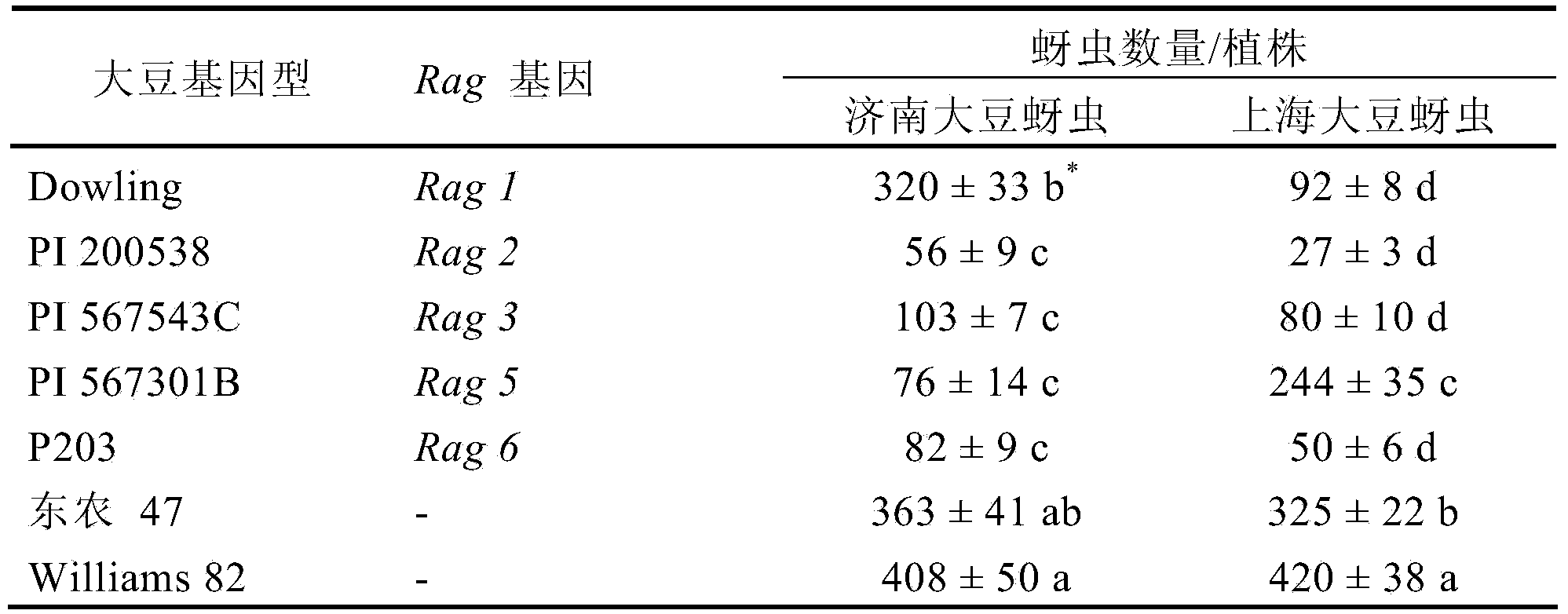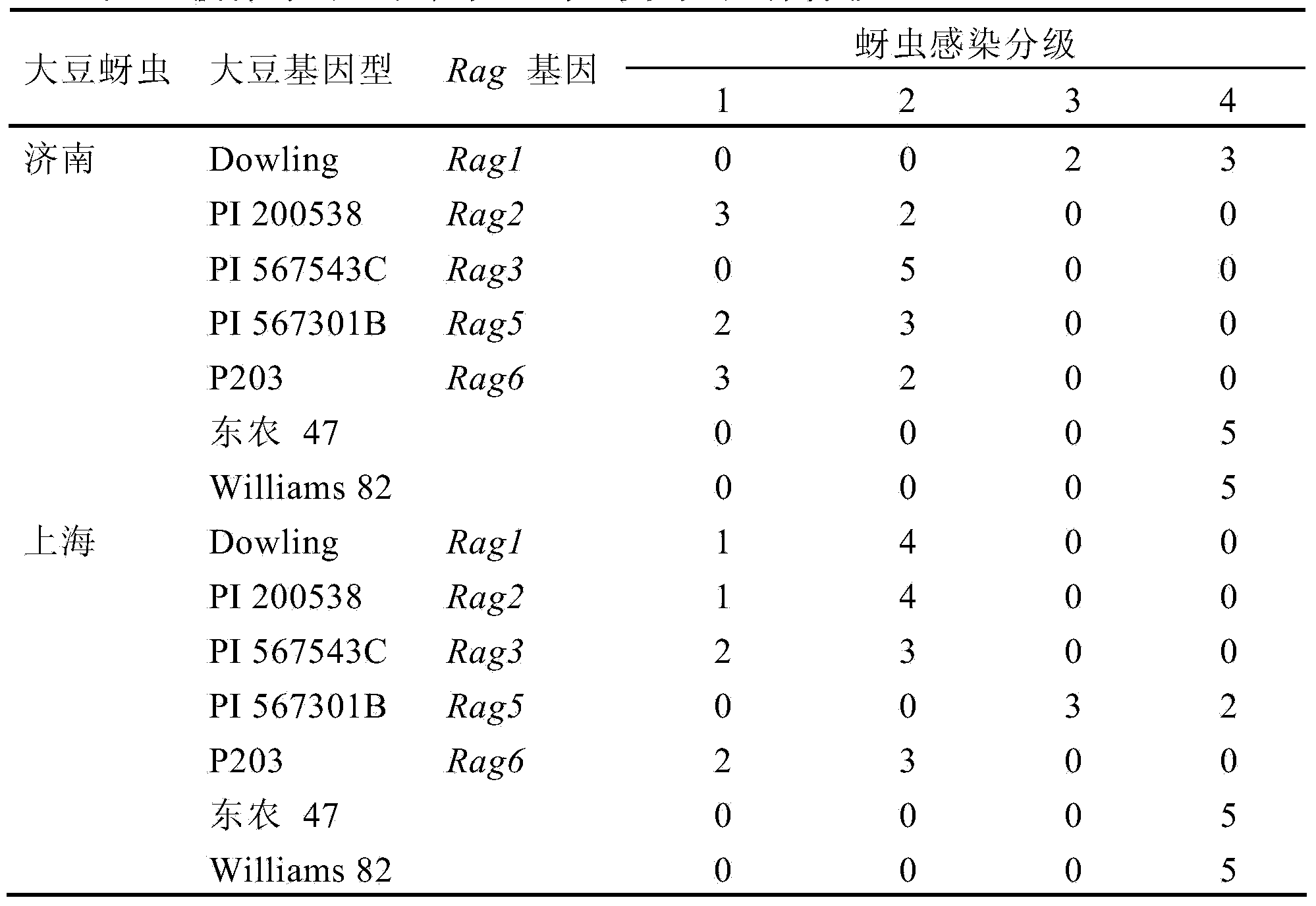Method for identifying soybean aphid physiological races
A technology for soybean aphids and physiological races, applied in animal husbandry and other fields, can solve the problems of lack of aphid-resistant gene soybean resources and heavy identification workload, and achieve reliable identification results, strong operability, and easy-to-obtain materials
- Summary
- Abstract
- Description
- Claims
- Application Information
AI Technical Summary
Problems solved by technology
Method used
Image
Examples
Embodiment 1
[0025] Identification of Physiological Races of Shanghai Soybean Aphid and Jinan Soybean Aphid
[0026] 1. In the greenhouse, isolate two "independent spaces" that are far apart and separated by double-layer gauze (it can also be two independent small greenhouses). 7 soybean identification hosts (Donnong 47, Williams82, Dowling, PI200538, PI567543C, PI567301B, P203) were sown in 1:1:1 peat, vermiculite, and perlite), and 5 replicates were set for each identification host. After about 12 days, the soybean seedlings grow to the V1 growth stage, that is, the first three compound leaves are fully expanded;
[0027] 2. Artificial inoculation of aphids. The Shanghai and Jinan soybean aphids cultivated on the susceptible soybean variety "Dongnong 47" were inoculated with 5 aphids to the fronts of three compound leaves of 7 soybean plants with a wet brush, and the aphids were inoculated. Afterwards, water management according to conventional cultivation measures;
[0028] 3. 14 days...
Embodiment 2
[0044] Identification of Physiological Races of Changchun Soybean Aphid and Guiyang Soybean Aphid
[0045]1. In the greenhouse, isolate two "independent spaces" that are far apart and separated by double-layer gauze (it can also be two independent small greenhouses). 7 soybean identification hosts (Donnong 47, Williams82, Dowling, PI200538, PI567543C, PI567301B, P203) were sown in 1:1:1 peat, vermiculite, and perlite), and 5 replicates were set for each identification host. After about 12 days, the soybean seedlings grow to the V1 growth stage, that is, the first three compound leaves are fully expanded;
[0046] 2. Artificial inoculation of aphids. The Changchun and Guiyang soybean aphids cultivated on the susceptible soybean variety "Dongnong 47" were inoculated with 5 aphids to the fronts of three compound leaves of 7 soybean plants with a wet brush, and the aphids were inoculated. Afterwards, water management according to conventional cultivation measures;
[0047] 3. 14...
PUM
 Login to View More
Login to View More Abstract
Description
Claims
Application Information
 Login to View More
Login to View More - R&D
- Intellectual Property
- Life Sciences
- Materials
- Tech Scout
- Unparalleled Data Quality
- Higher Quality Content
- 60% Fewer Hallucinations
Browse by: Latest US Patents, China's latest patents, Technical Efficacy Thesaurus, Application Domain, Technology Topic, Popular Technical Reports.
© 2025 PatSnap. All rights reserved.Legal|Privacy policy|Modern Slavery Act Transparency Statement|Sitemap|About US| Contact US: help@patsnap.com



